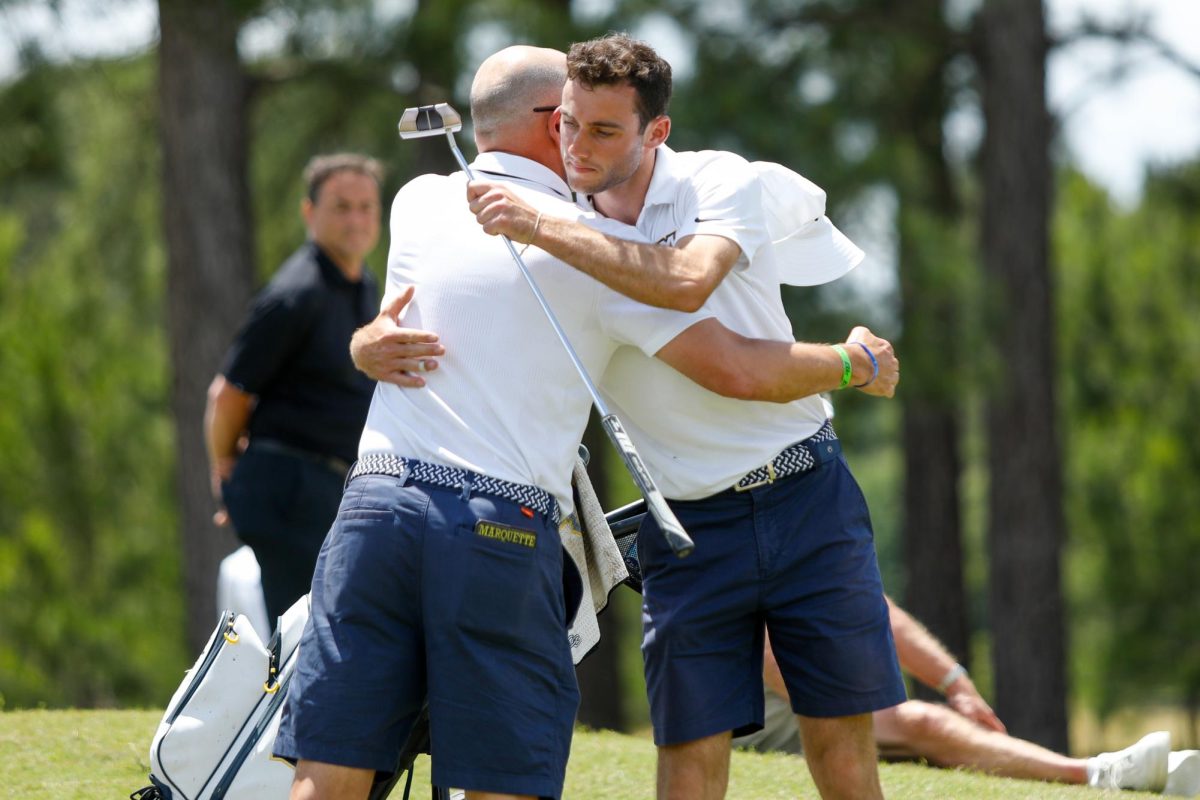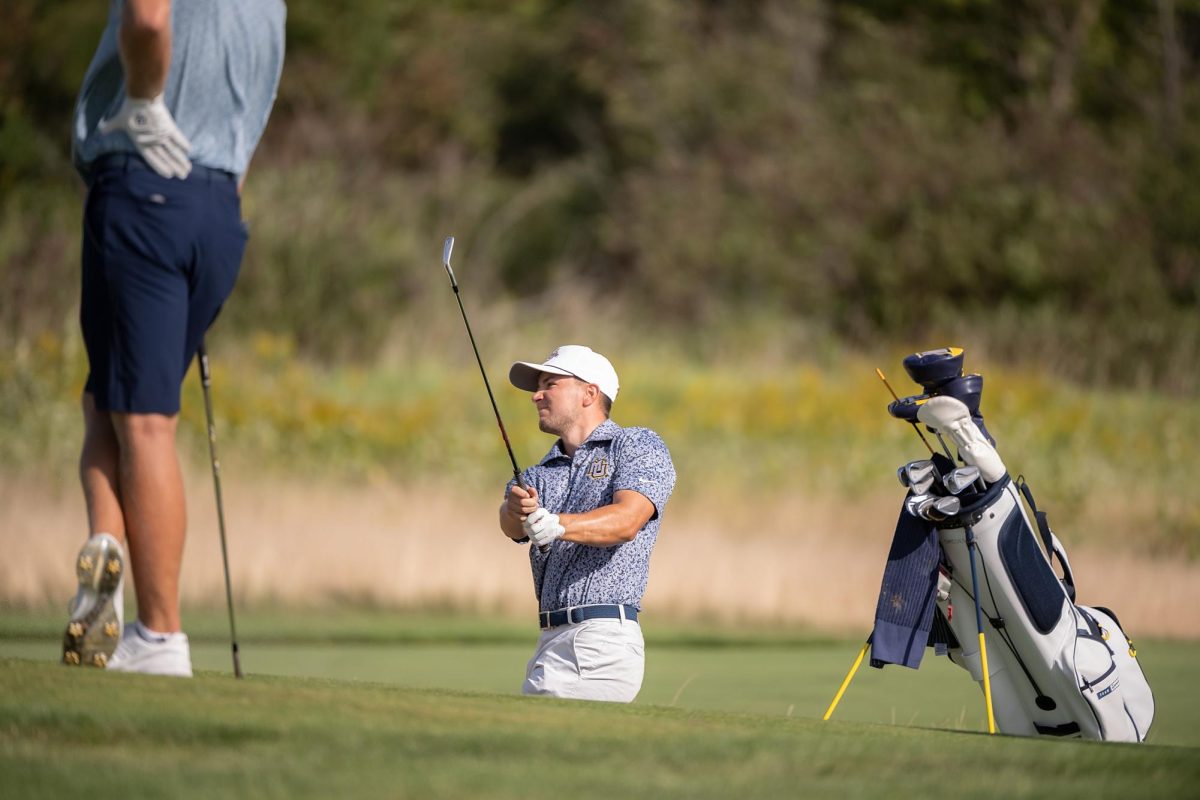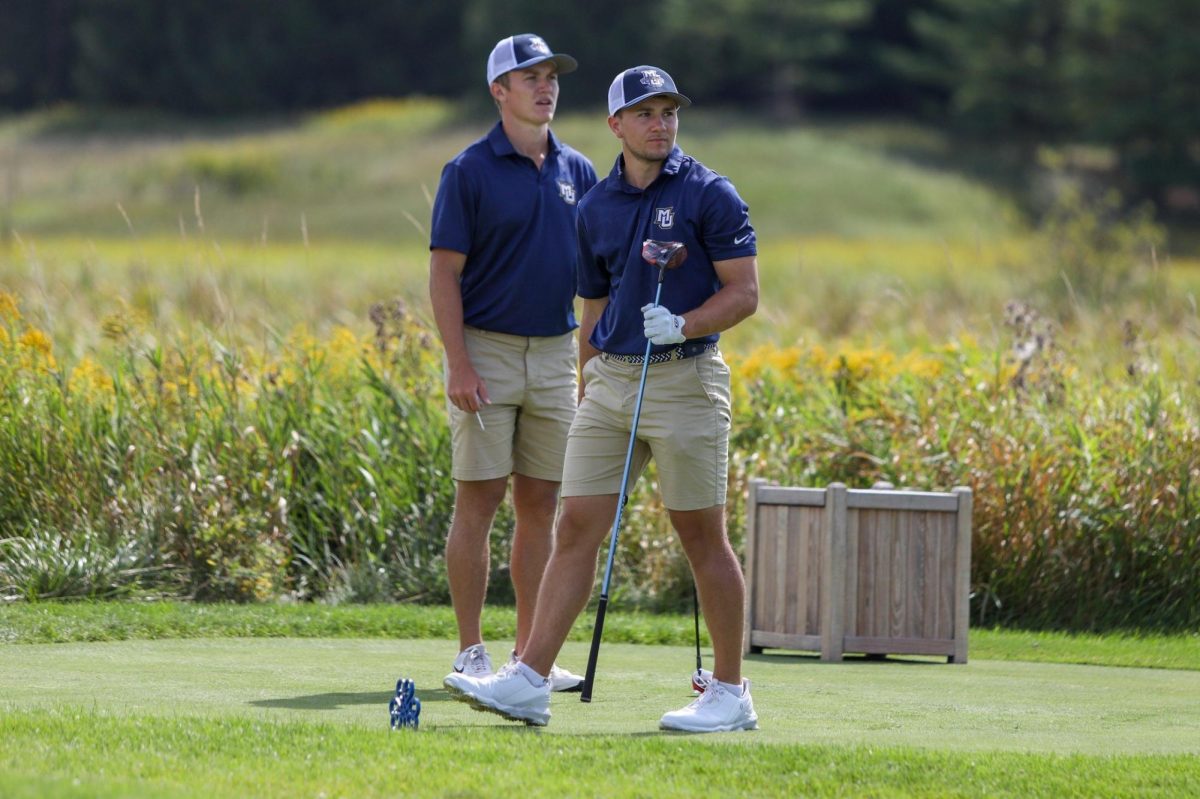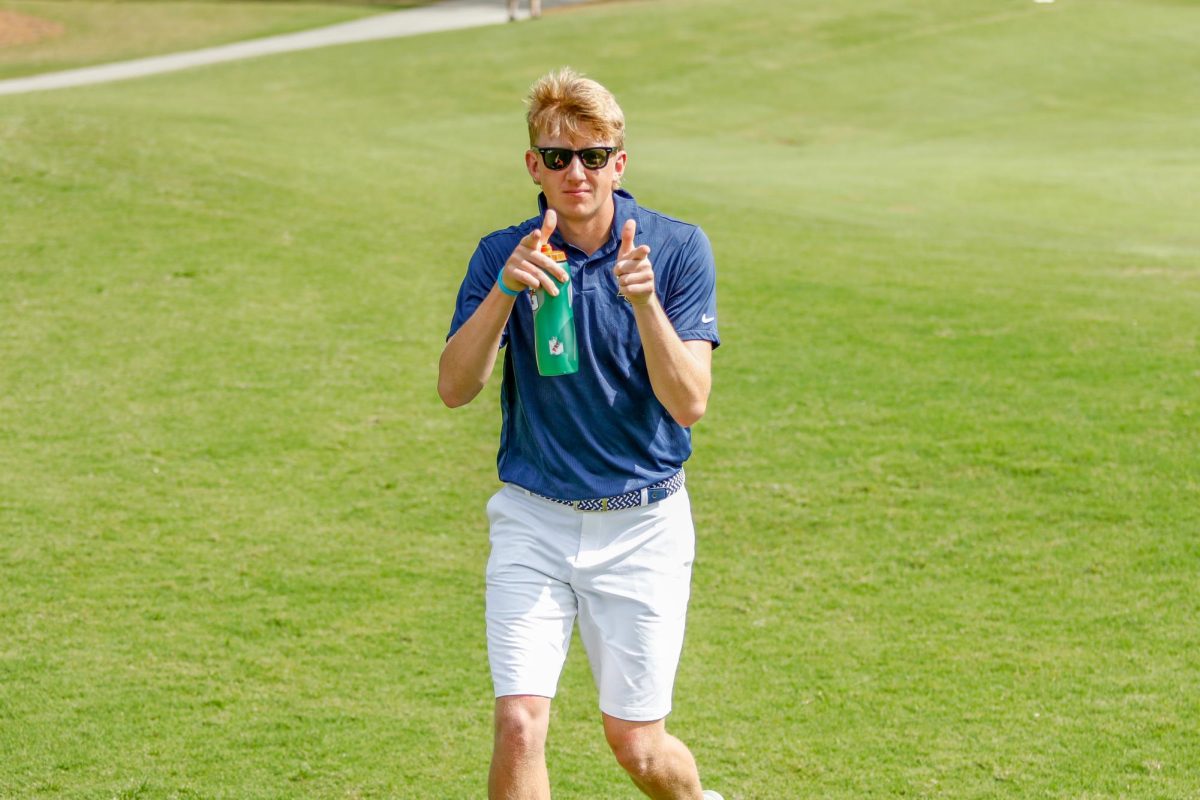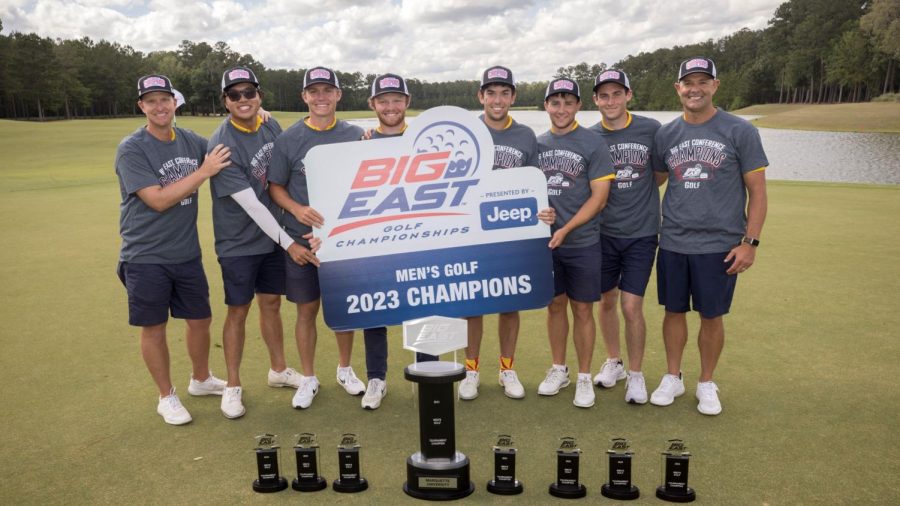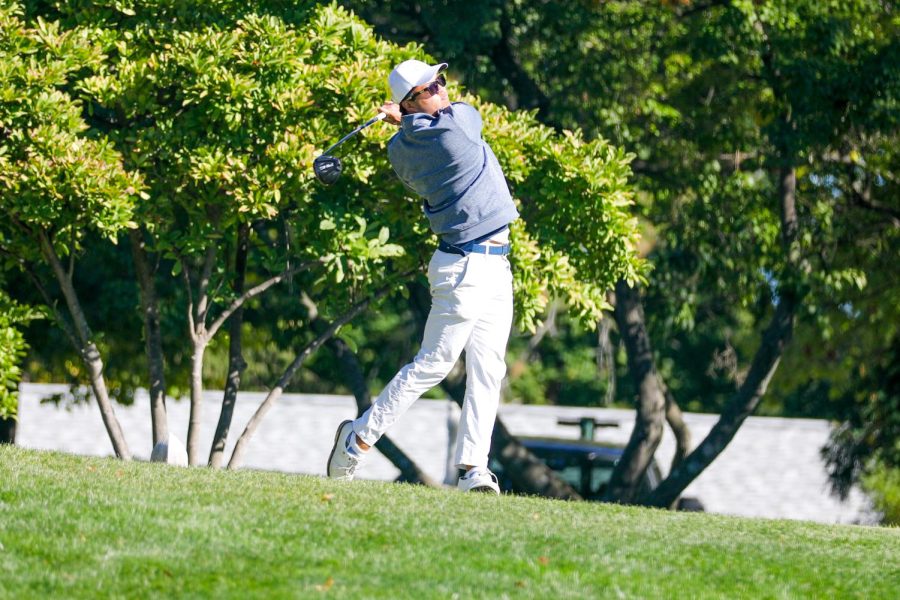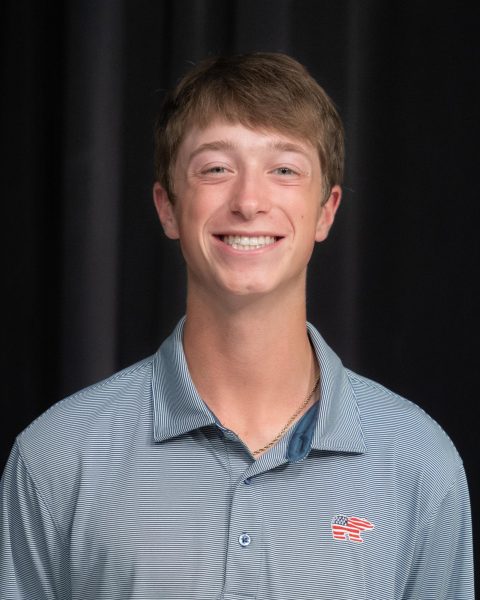Graduate student Aidan Lafferty stands on the No. 9 tee of Erin Hills. The challenging, short par three plays only 135 yards, but the wind makes the tee shot closer to 160 into a tucked, front-left pin.
Lafferty, a caddie at Erin — which is just 40 miles northwest of Marquette — in the summer, said he knows what it takes to hit his last tee shot of the day in the final round of the Marquette Intercollegiate.
“The green looks small, but I know where to miss, and it makes the hole a lot less intimidating,” Lafferty said. “I’ve seen it so much, and being comfortable at a big, intimidating course and hard to look at from a visual perspective is helpful.”
The dynamic between being a player and a caddie goes deeper than just earning a summer wage. Some of Marquette’s golf team players see their summer experience on the other side of the bag as a mental lesson.
Junior Patrick Adler, a caddie at Indian Hills in Illinois, said he learned a lot about his mental game in golf from seeing how other people play as a caddie.
“Coming into Marquette, I didn’t have the best mental game, and I would call myself bad things and let it carry into the next couple swings,” Adler said. “Here, I have learned more about my mental attitude, and I see it through caddying how people talk poorly about themselves after bad swings.”
Adler saw this firsthand at the Gopher Invitational, where the team placed fourth, finishing +2 as a unit at Windsong Farm Golf Club.
“We saw this come to fruition with our team at Windsong,” Adler said. “Our bounce-back rate after bogeys was incredible; we would be making birdies after, and it’s a testament to how much work we have put into our mental games.”
Lafferty said the mindset of being a caddie plays a more significant role when it comes to being the one hitting the shots.
“Your attitude as a caddie is one of, ‘We can figure it out from there,’ or, ‘We can make that work,’ and as a player, it’s hard to feel that way because you will hit a couple of bad shots and want to minimize the damage,” Lafferty said.
First-year Mason Schmidtke and his brother Max, who plays golf at South Dakota, caddy for each other in their summer qualifiers. He said this connection with his brother is what he loves most about golf.
“We coach each other whenever we are struggling, and we will go over swing videos we send each other,” Mason said. “We know each other’s tendencies; I try to make him more aggressive, and he tries to make me more conservative in tournaments.”
Mason said Max’s persistent encouragement has helped mentally prepare him to handle the long days of tournament play.
“I was in contention with four holes to play at my first State Open qualifier, and I had made a couple of bogeys in a row, and he could tell I was getting tired,” Mason said. “He motivated me, saying, ‘Are you going to give up when you are tired, or just keep playing the game?’
“If you hire a caddie from the course, he’s not going to motivate you when you are getting tired, but because we are brothers, we know how to handle when we struggle,” he said. “I recall these things when I’m on the course, especially on those 36-hole days; it reminds me to dig in and grind the last few holes.”
In tournaments, the golfers have learned to be their own caddies, which assists them around the greens.
“I picked up on how important green reading is for the players I caddie for, and I learned different techniques that I apply to my game,” Adler said. “I have read greens with my eyes and feet so much better.”
Lafferty said because of his caddying experiences, his process on the greens has changed too.
“I have conflicting reads caddying sometimes, and I can deal with that when I am playing, but it’s hard to convey to someone else how I would play the putt,” Lafferty said. “With that, my process has become simple and has helped me be confident in my instincts.”
For Mason, he uses his internal caddie to find the balance between conservative and aggressive shots.
“I always start with my more aggressive option and scale back, trying to figure out how the scenario plays out,” Mason said. “How I play a shot depends on the scenario because when I’m in a tournament, you play in a team scenario, and every shot counts toward keeping the team in it, so I play a little more conservative.”
Even in high pressure situations, Lafferty said he is able to keep himself in check through his caddying experience.
“I want to be someone I’d want to caddie for,” Lafferty said. “It’s not fun to be around somebody who is in their own head all the time, so I want to emulate what I see from players who do that well and talk to myself like a good caddie at the same time.”
This story was written by Trevor Hilson. He can be reached at trevor.hilson@marquette.edu or @hilsontrevor on X.




